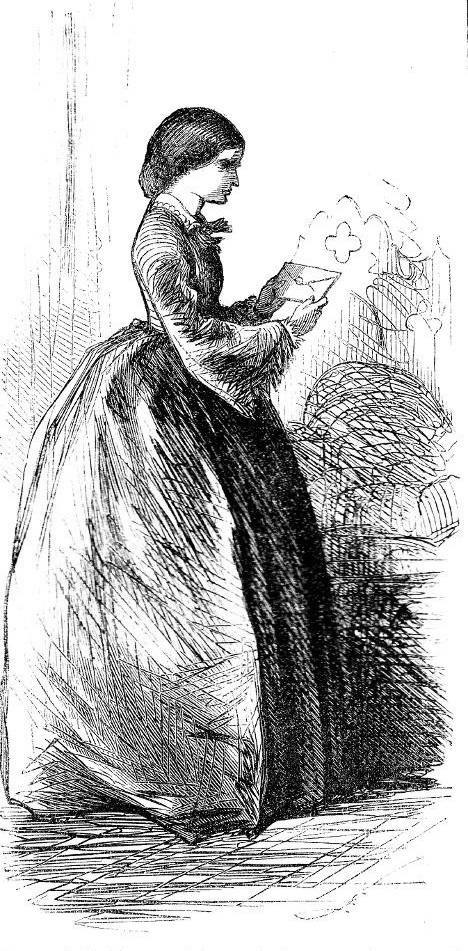Marion about to post a letter to her London solicitor.
John McLenan
3 March 1860
11.3 cm high by 5.6 cm wide (4 &frac;38 by 2 ⅛ inches), framed, p. 133; p. 106 in the 1861 volume edition.
Headnote vignette for the fourteenth part of Collins's The Woman in White: A Novel (1860).
After Glyde's insulting conduct over Laura's signing the parchment, Marian is determined to receive legal advice about how such a document might compromise Laura's estate. Reply by regular post simply will not be fast enough since Glyde will return from his mysterious journey tomorrow. She must have a special messenger from Gilmour's associate in London by the next afternoon.
Scanned image and text by Philip V. Allingham.
